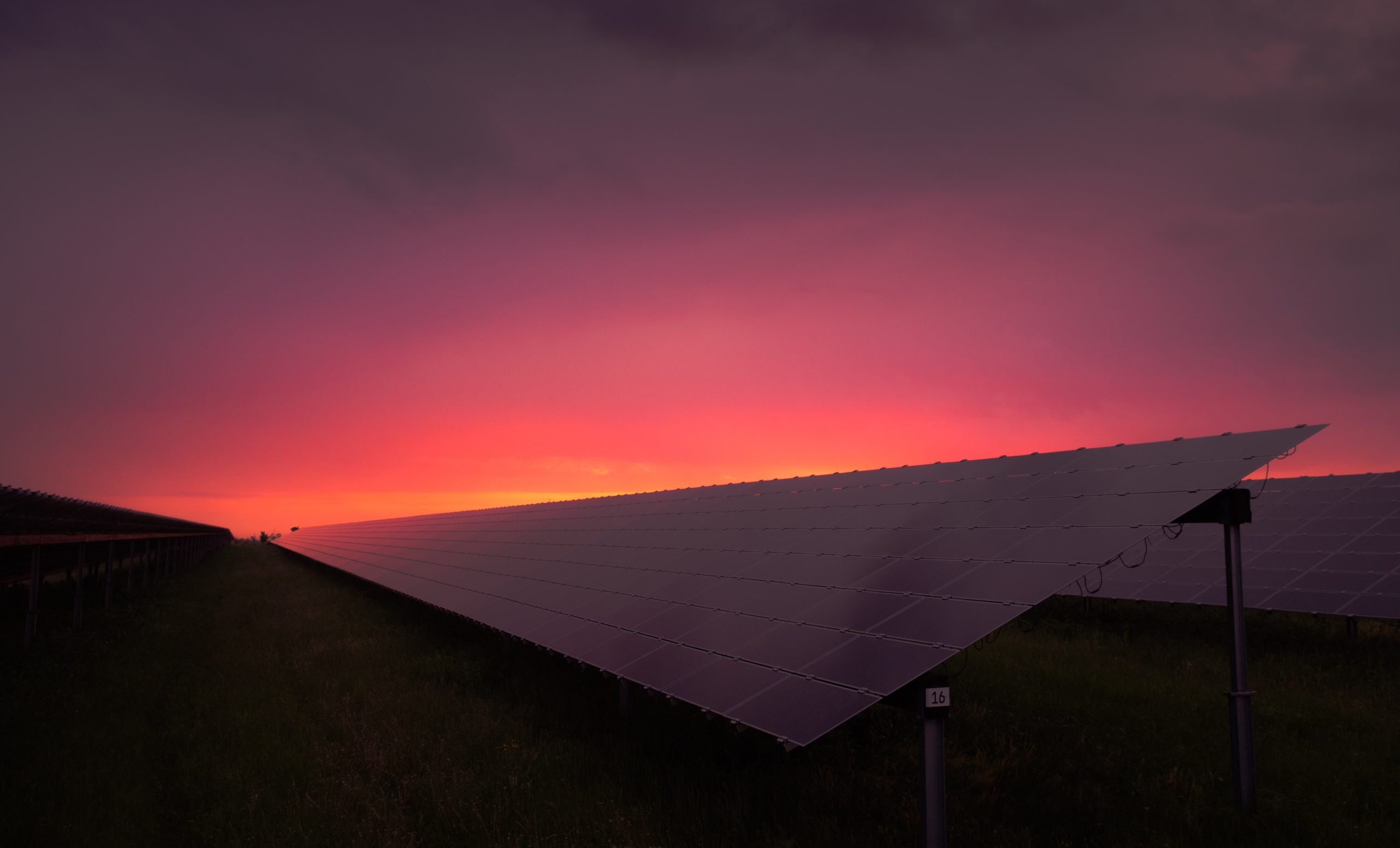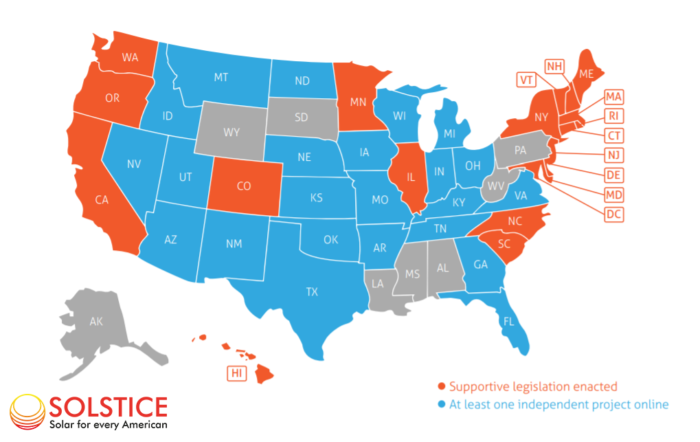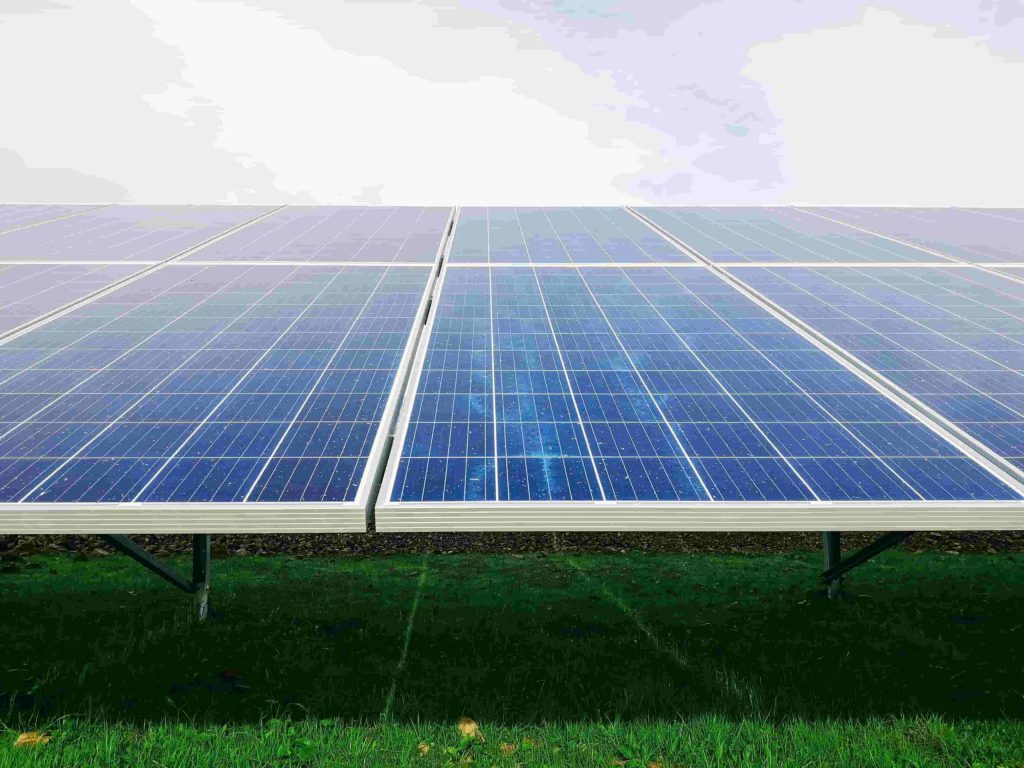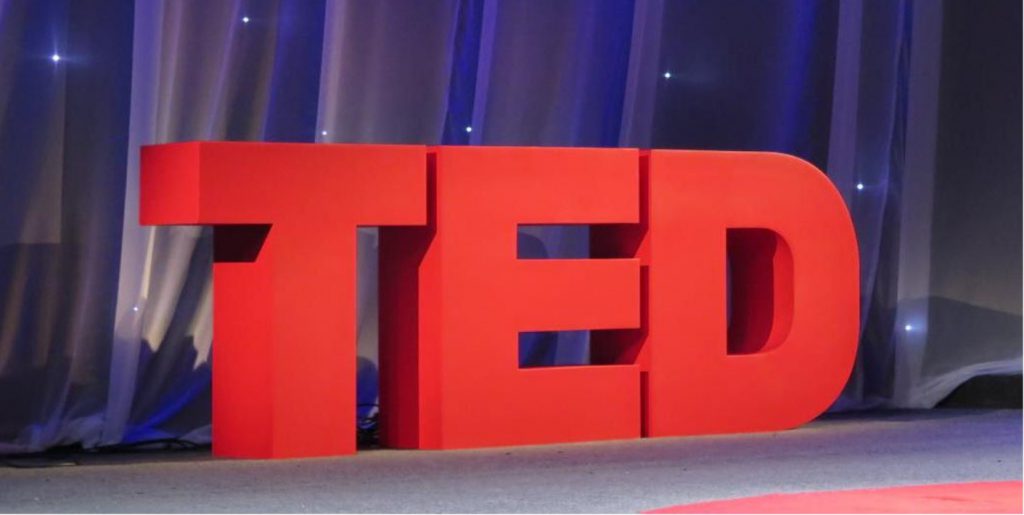We’re officially in month two of 2022, and solar, along with other forms of renewable energy, is already set for another year of rapid growth.
With a 10% projected increase in U.S. renewable energy this year and a projected 26% increase by 2026, renewables like solar are quickly becoming the superpowers of the climate change movement.
In fact, just a couple of weeks ago, the Coalition for Community Solar Access aligned their growth plans with the U.S. Department of Energy’s National Community Solar Partnership, announcing that the community solar industry alone is committing to the development of 20 GW of capacity by 2025! And, S&P Global Market Intelligence announced that they expect over 44 gigawatts of solar power to come online this year, nearly doubling 2021 projections … by the way, those 44 gigawatts are enough to power over 30 million homes!
In a nutshell, growth – and a whole lot of it. Let’s take a closer look at some key factors that are powering the renewable industry this year and shed some light on where all this growth is coming from.
Table of Contents
1. Solar is making a shift from “luxury” to “lifestyle.”
Today, people go solar for a lot of reasons: tax incentives, higher home values, sustainability, and saving on their electricity bills over time. But traditionally, solar was just not seen as an accessible home upgrade. Going solar was for the rich and famous or the “super green.”
We’ll admit, even with the decreasing price of solar technology, the price of solar installation on individual homes still gives a lot of folks sticker shock.
What about solar on a larger scale – let’s say, for businesses and rental properties? If you think installation on your home is pricey can you imagine the cost to install enough solar panels to power your local grocery store? Definitely feels like a luxury.
Community solar programs are now available in 41 states and are one way to get the luxury of solar without the cost. Community solar is gaining popularity by giving individual people, communities, small businesses, and even entire municipalities the opportunity to “plugin” to solar without purchasing and installing expensive solar apparatus on their own homes or buildings — making it easier than ever to join the solar lifestyle! Now we can become more energy independent, meet our shared climate and energy goals, and save a little money in the process.
The shift from luxury to lifestyle is also being powered by more substantial support from government policies and the clean energy goals announced during the COP26 Climate Change Conference, which we will tackle next.
2. The White House Administration is calling for a carbon-free power sector by 2035 – and working hard to make that a reality.
When President Biden took office just over a year ago, his pledge to combat climate change and increase renewable energy felt a little unattainable to the average American. Fast forward to today, and we’ve seen improvements in climate change mitigation and the advancement of environmental and energy justice – cue high-fives! Here are a couple of major government announcements that support renewable energy growth this year:
![]()
- The Department of Energy announced its community solar expansion goals, which outline a 600% increase in community solar by 2025 – equivalent to the power used by 5 million homes – showing their commitment to addressing climate change, promoting clean energy, and creating jobs. Reaching these goals could save nearly $1 billion and contribute to overall administration goals of achieving a fully renewable electricity and carbon-free power sector by 2035. This push for renewable energy and community solar will significantly affect low-income communities who typically do not have access to solar, furthering the administration’s agenda to reduce energy burdens and shed light on energy justice.
- The Bipartisan Infrastructure Law is now allowing the building of thousands of miles of transmission lines that deliver clean energy. The transmission line build is currently the most significant investment in America’s power grid. It could make the grid more reliable and resilient as climate change increases extreme weather.
Want to join the renewable energy movement?
3. The Energy Justice movement is gaining attention, and the steps to bring forth change will require the widespread use of renewable technologies.
Energy justice has been a long-time focus here at Solstice, but this year, we are not the only ones getting involved! Broader support can be seen across the nation for accessible renewables like community solar, which will aid our efforts in achieving energy equality. Here are a few of the ways the issue of Energy Justice is being confronted head-on, and how growth in renewable energy will play a key role in accomplishing these goals:
- The establishment of the first-ever White House Environmental Justice Advisory Council. This council raises awareness of Energy Justice concerns and provides guidance to government entities on how to address them. A few of their areas of concentration this year will include the clean energy transition, climate change mitigation, sustainable infrastructure, and pollution reduction in overburdened communities.
- The U.S. The Department of Energy established the Justice40 initiative. This initiative pledges to commit 40% of the overall benefits from federal investments in climate and clean energy to energy-burdened and under-resourced communities, and will address the high levels of pollution, chronic disinvestment, and lack of access to capital in BIPOC communities and low-moderate income communities. Community solar will very likely play a role in this initiative to bring affordable energy and housing to the communities that need it most.
- The White House Administration announced that they would be teaming up with states, cities, labor, and industry to launch the Building Performance Standards Coalition. This coalition is a partnership between 33 state and local governments dedicated to creating cleaner and more affordable buildings, ultimately creating jobs, lowering energy bills, and cutting emissions. This project will aid the Department of Energy’s efforts to upgrade one million homes and progress toward President Biden’s goal of retrofitting four million buildings and two million homes during his term. You can read more on the impacts of the Building Performance Standards Coalition and its effects here.
4. Tax credits, sustainability and national interest – a look at why businesses are investing in and utilizing renewable energy in 2022.
![]()
Many are looking to boost their brand as environmentally friendly, reduce energy bills, and curb emissions – all things we can appreciate. One of the most manageable steps towards reaching sustainability goals is switching to renewable energy. Community solar makes that jump to renewables a little easier by removing the need for installation. Now, a business can simply sign up for a share of a community solar garden, effortlessly reducing their carbon footprint and gaining favorability as a sustainable brand – an important factor as we continue to see a trend favoring climate-conscious companies.
For companies or areas where community solar is not an option (yet), we will see renewable growth through the use of the Investment Tax Credit. This 25% tax credit gives businesses (and homeowners) the opportunity to gain rebates for installing traditional solar power – making solar more enticing than ever before. Additionally, the Investment Tax Credit has played a role in giving the U.S. national interest in solar energy by reducing the burden placed on local utility grids and helping us become more resilient and energy independent – both critical factors in the investment and growth of renewable energy long term. Solstice has worked on 36 projects (10 available, 26 full) in Massachusetts, New York, and Illinois.
5. How Solstice is aiding growth in the renewable energy space.
With these renewable incentives, you may wonder, “What solstice is doing in 2022 for renewables and community solar?” and we are excited to tell you.
- This year, Solstice will continue to make affordable energy a reality for low-moderate income and BIPOC communities typically underserved by our energy systems. Despite the lowering costs of solar energy, 4 out of 5 Americans still cannot install rooftop solar – whether the installation costs, home shading or positioning or homeownership status. Historically the communities who are the most in need of clean energy have seen lower levels of renewable energy access due to housing, credit scores, and other economic barriers, and thus, are seeing less of the benefits associated with renewable energy like lower energy bills, economic development, and even local employment opportunities. We will continue to work with developers and financiers to expand our reach in communities to bring access to affordable renewable energy to all Americans.
- We’re breaking the barriers to affordable renewable energy by perfecting our EnergyScore, an alternative credit metric to qualify community shared solar customers and work towards a more inclusive model. Learn more about how we’re democratizing clean energy.
- We’re expanding to new states. This year we look forward to working with developers across the nation to bring affordable renewable energy right to your doorstep and continue the expansion of clean energy.
- We’re supporting the communities we serve. We are a software platform built to connect community solar projects to consumers, but we want to be your community partner. Last year we donated over $80,000 to community organizations across the U.S. to give back to the communities who helped us grow, and this year we plan to expand our reach by connecting more organizations to renewable energy – giving them the opportunity to raise funds and make a difference in their communities.
- User experience is everything to us, and we have streamlined the enrollment process to be easily accomplished in under 5 minutes. As the middleman in energy supply (working with customers, utilities, and developers), we want to ensure that our puzzle piece fits just right for every party we connect with. We streamlined our new allocation tools, referral programs, and utility eligibility processes for an effortless customer experience so more people can be as pumped as we are about signing up for renewable energy.
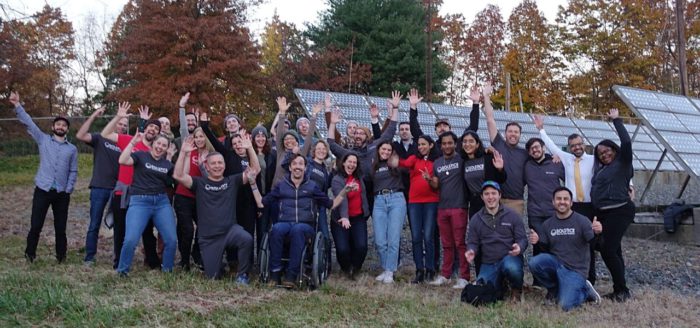
Whether you’re a customer, a developer, an investor, or an activist, we think you’ll agree that renewables are making big moves this year and you can make big moves too!
Join millions in the climate change movement and become one of the reasons the renewable industry is growing by signing up for community solar – we pinky swear that we’ve made this process painless – and you can proudly say that you’re a part of a greener future.
Check to see if you're eligible for community solar and enroll in less than 5 minutes!
Please note that solar projects fill rapidly, and space is limited on each solar farm. If you’re still solar-curious, please read up on how community solar works or chat with an enrollment specialist for assistance.
